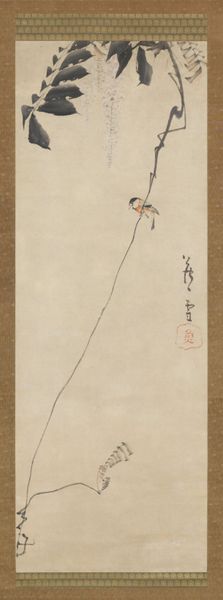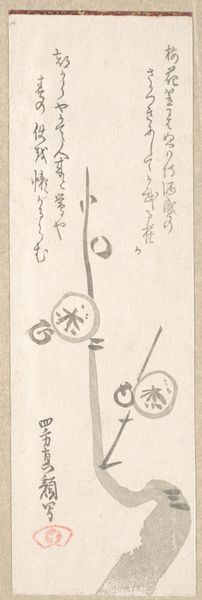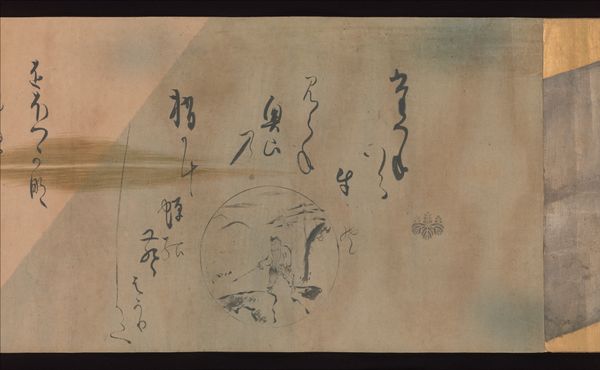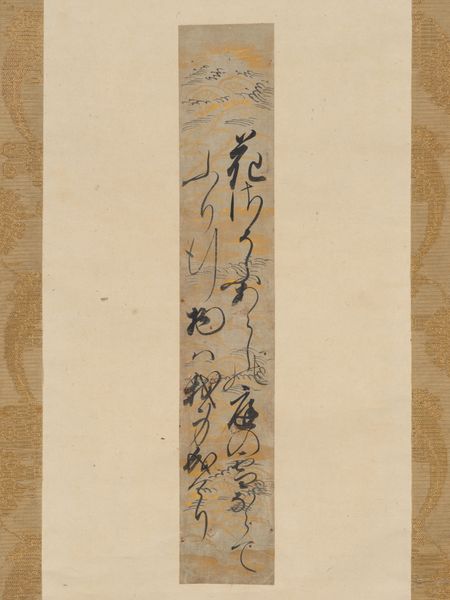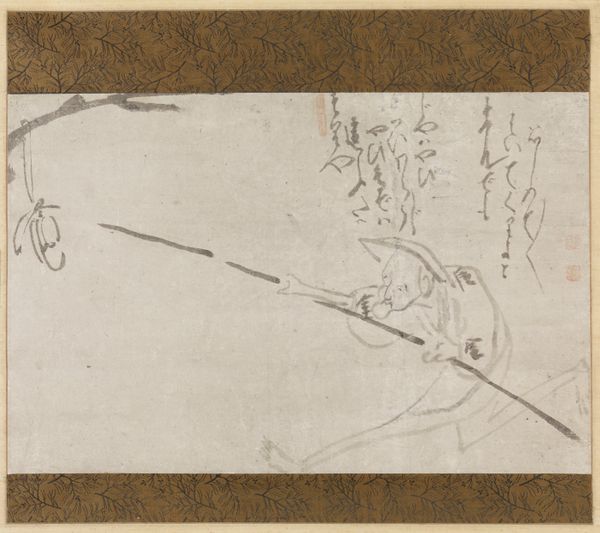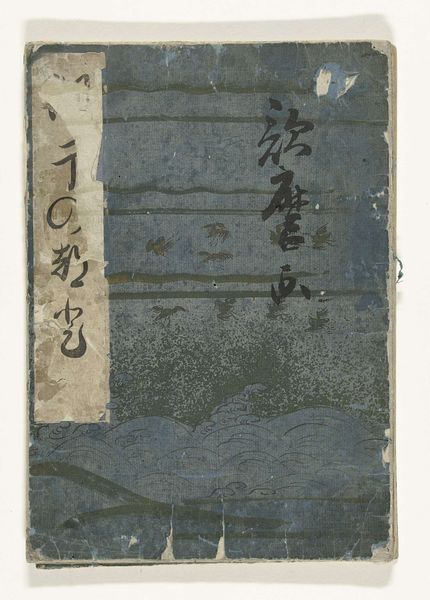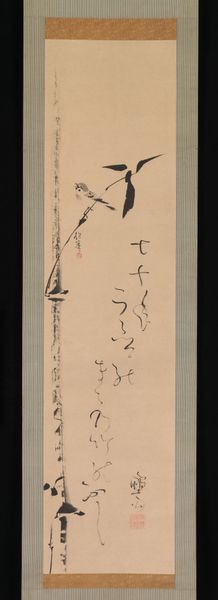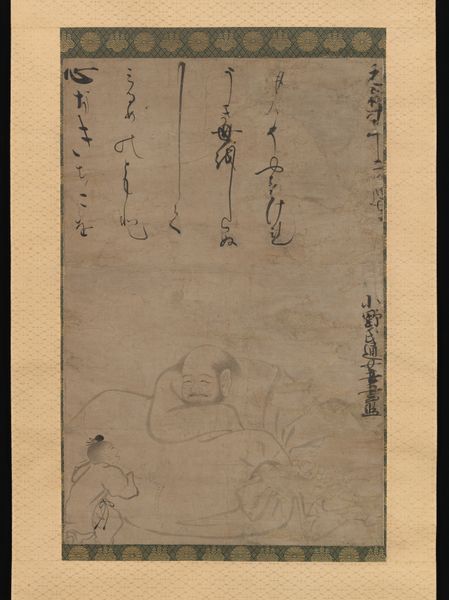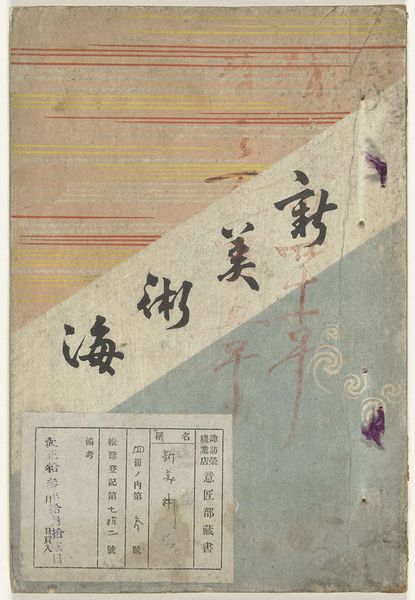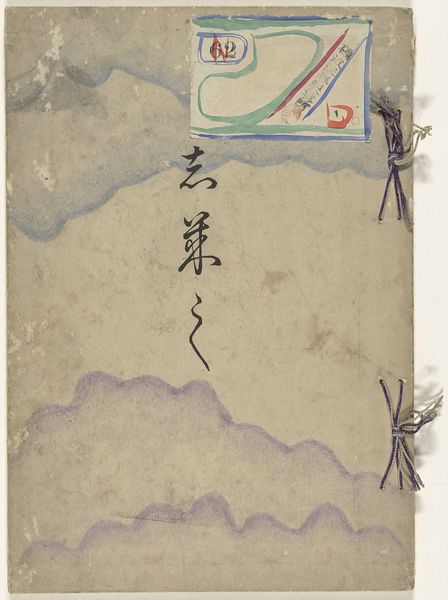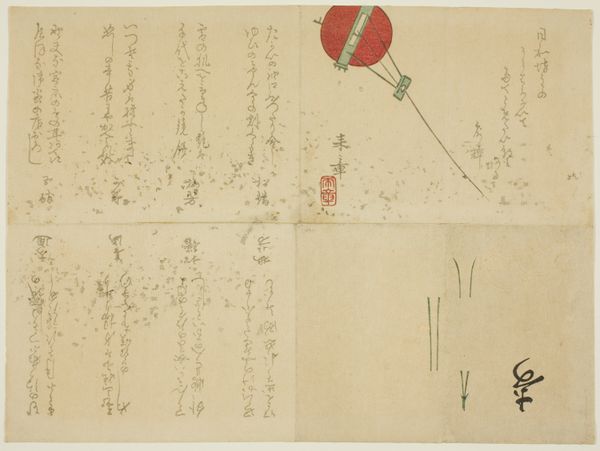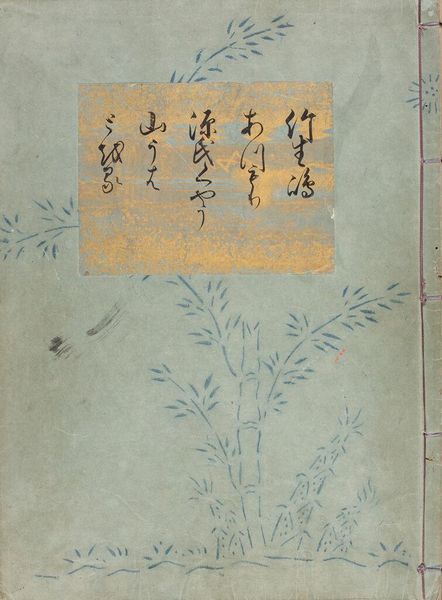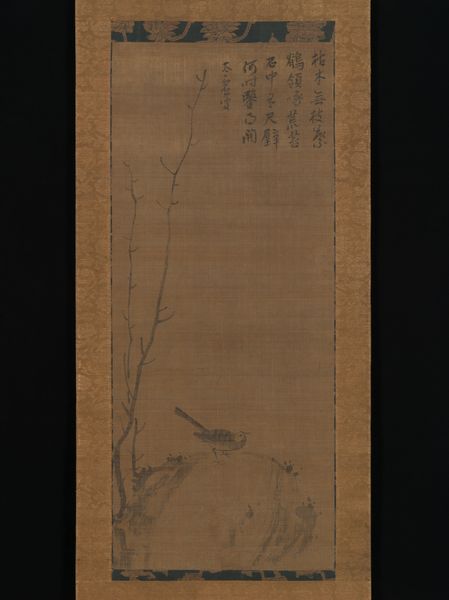
print, impasto, ink, woodblock-print
# print
#
asian-art
#
landscape
#
bird
#
ukiyo-e
#
impasto
#
ink
#
woodblock-print
#
botanical art
#
watercolor
Dimensions: height 356 mm, width 115 mm
Copyright: Rijks Museum: Open Domain
Utagawa Hiroshige's woodblock print captures a Japanese bush warbler perched among plum blossoms. These are no mere decorative elements; they are potent symbols within the cultural landscape of Japan. The plum blossom, or ume, signals the end of winter, embodying resilience and renewal, a delicate promise of the life to come. It’s not dissimilar to how, since antiquity, the almond blossom has featured in Christian art to represent the Virgin Birth. The warbler, known for its song, is also associated with the arrival of spring. Think of the Nightingale, which, since the classical times, has represented poetry, love, and longing. Here, the motif has traveled, evolved, yet retained its core association with nature’s awakening. There's a longing imbued within the image, a subconscious desire for warmth and vibrancy after the cold months, amplified by the warbler’s song and the delicate plum blossoms, engaging our senses on a visceral level. The cyclical return of these symbols, the plum blossom and the songbird, resurfaces in art across continents and centuries, reminding us of our shared human experience, our enduring connection to nature, and the hope for rebirth in the face of adversity.
Comments
No comments
Be the first to comment and join the conversation on the ultimate creative platform.
